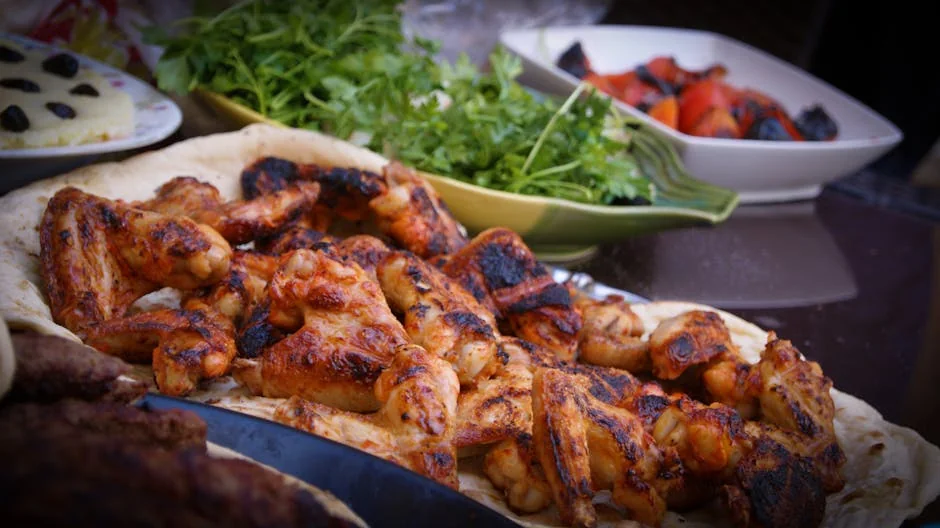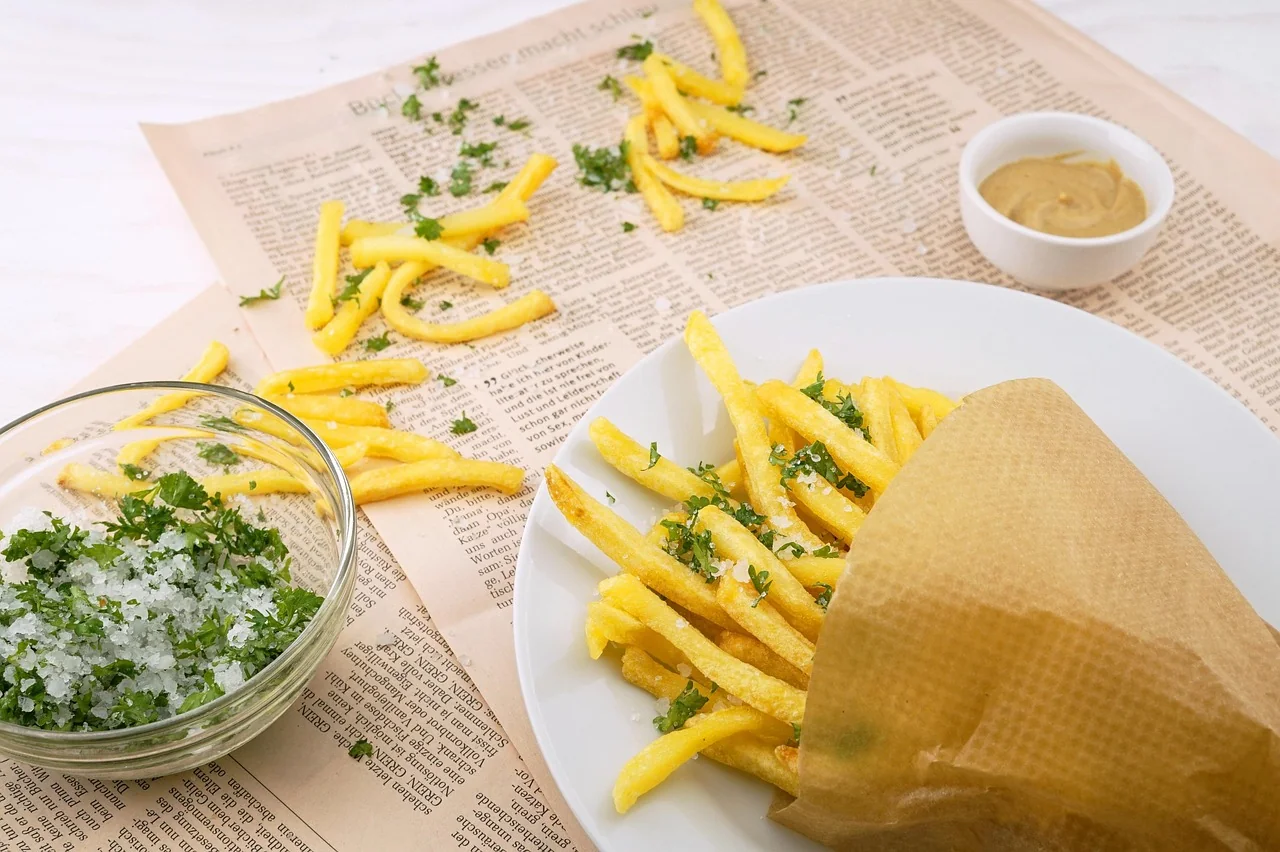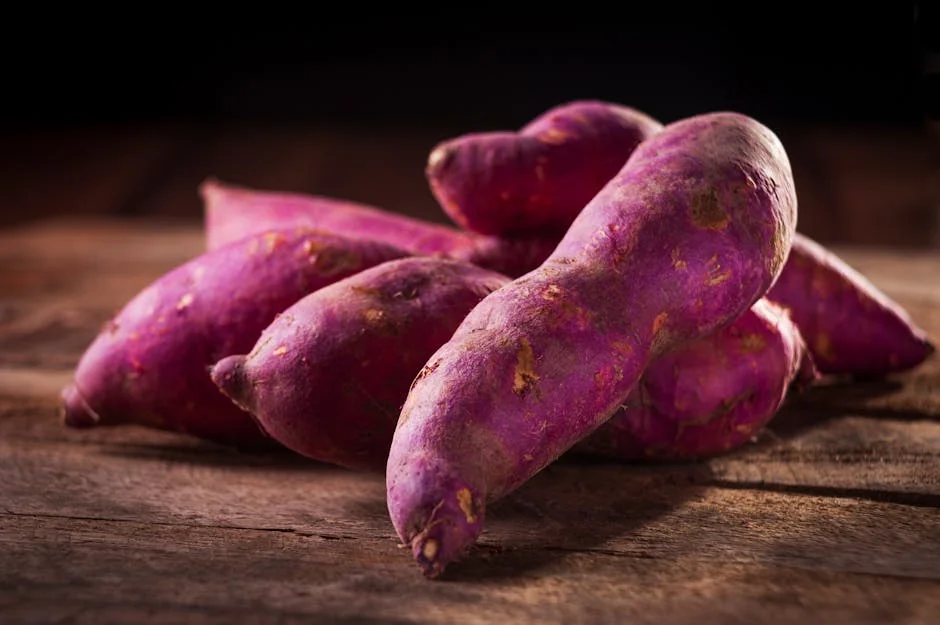Introduction
Air Fryer Roasted Vegetables: Complete Guide
Are you tired of waiting 45 minutes for vegetables to roast in a traditional oven, only to find them either undercooked or burnt? Air fryer roasted vegetables might be the game-changing solution you've been searching for. This innovative cooking method delivers perfectly caramelized, crispy-on-the-outside vegetables in a fraction of the time—often ready in just 15-20 minutes.
In this comprehensive guide, we'll explore everything you need to master air fryer roasted vegetables. You'll discover how air fryer technology differs dramatically from conventional oven roasting, delivering superior results through rapid air circulation that creates that coveted golden exterior while keeping interiors tender. We'll break down the science behind why air fryers excel at vegetable preparation, helping you understand exactly what makes them so effective.
Beyond the mechanics, you'll learn the practical benefits that make air fryer roasted vegetables a weeknight staple for busy home cooks. We'll cover which vegetables work best, essential seasoning techniques, and pro tips for achieving restaurant-quality results every single time. Whether you're new to air frying or looking to elevate your vegetable game, this guide provides everything you need to become an air fryer roasting expert.
What Are Air Fryer Roasted Vegetables?
Air fryer roasted vegetables represent a modern cooking method that uses rapid air circulation technology to achieve crispy, caramelized vegetables in a fraction of the time required by traditional ovens. This cooking technique involves placing seasoned vegetables in a perforated basket where superheated air circulates at high speeds, typically between 350-400°F, creating a Maillard reaction that produces golden, flavorful results. The process is faster, more energy-efficient, and often produces superior texture compared to conventional roasting methods.
The appeal of air fryer roasted vegetables lies in their convenience and consistent quality. Unlike traditional oven roasting, which can take 25-35 minutes, air fryers typically complete the job in 10-15 minutes while using significantly less electricity. The smaller cooking chamber concentrates heat more effectively, ensuring even cooking and browning without the need for constant stirring or repositioning. Home cooks appreciate this method for weeknight dinners when time is limited but nutritious, delicious vegetables are essential.
Understanding Air Fryer Technology for Vegetable Roasting
Air fryers function through convection cooking, where a heating element rapidly warms air that circulates around food at high velocity. This constant movement of hot air removes moisture from the vegetable surface, creating the desirable crispy exterior while maintaining tender interiors. The technology essentially mimics deep frying results without requiring oil, though a light coating of cooking spray or oil enhances browning and flavor development.
The basket design plays a crucial role in successful air fryer roasted vegetables. The perforated base allows hot air to reach all surfaces of the vegetables simultaneously, promoting even cooking and preventing soggy spots. Single-layer placement is important—overcrowding the basket traps steam and prevents proper air circulation, resulting in steamed rather than roasted vegetables. Most air fryers have a 2-4 quart capacity, making them ideal for side dishes serving 2-4 people.
Temperature control in air fryers is remarkably precise compared to conventional ovens. Most models maintain consistent heat without fluctuation, eliminating the guesswork associated with oven hot spots or temperature variations. This reliability makes it easier to achieve reproducible results every time you prepare vegetables.
How Air Fryers Differ from Conventional Roasting Methods
Traditional oven roasting relies on radiant heat from above and below, which heats the air around vegetables more gradually. This method requires longer cooking times and often needs manual tossing halfway through to ensure even browning. Conventional ovens also preheat slowly and lose heat when doors open, affecting overall efficiency and cooking consistency.
Air fryers eliminate these drawbacks through their compact design and rapid air circulation system. The intense, direct heat exposure creates superior browning in significantly less time. Additionally, air fryers require minimal preheating—most reach optimal temperature in just 2-3 minutes compared to 15-20 minutes for traditional ovens.
Energy consumption represents another significant difference. Air fryers use approximately 70% less electricity than conventional ovens, making them economical for regular use. For environmentally conscious cooks or those watching utility costs, this efficiency advantage makes air fryer roasted vegetables an attractive cooking solution worth incorporating into regular meal preparation routines.
Why Air Fryer Roasted Vegetables Are Worth Making
Air fryer roasted vegetables represent a game-changing approach to healthy eating that combines nutritional benefits with unbeatable convenience. Whether you're a busy professional, a health-conscious home cook, or someone looking to streamline meal preparation, air frying vegetables delivers results that justify making it a regular part of your cooking routine. This cooking method transforms ordinary vegetables into crispy, flavorful side dishes that rival traditional oven-roasting while offering distinct advantages that make it worth your time and effort.
Health Benefits of Air Fryer Cooking for Vegetables
Air frying requires little to no added oil, making it an excellent choice for health-conscious eaters watching their fat and calorie intake. Unlike deep frying, which saturates vegetables in oil, air fryers circulate hot air to create crispy exteriors while maintaining the nutritional integrity of the vegetables inside. This means you retain more vitamins and minerals that traditional cooking methods might diminish through prolonged exposure to high heat and oil absorption.
The minimal oil requirement also reduces unhealthy fat consumption without sacrificing taste or texture. You can achieve that satisfying crunch using just a light coating of olive oil or cooking spray, making air fryer roasted vegetables an ideal option for anyone following low-fat diets or managing cholesterol levels. Additionally, air frying doesn't produce the harmful compounds that can develop during traditional deep frying, making it a cleaner cooking method overall.
Time and Energy Efficiency Advantages
Air fryers dramatically reduce cooking time compared to conventional ovens, with most vegetables reaching perfect doneness in 10-15 minutes. Your preheating time is minimal—typically just 2-3 minutes—compared to the 15-20 minutes required for traditional ovens. This efficiency means you can prepare a complete vegetable side dish faster than it takes to bake something in a conventional oven, making weeknight dinner preparation significantly more manageable.
Energy consumption is another compelling advantage worth considering. Air fryers use substantially less electricity than full-size ovens because they heat a smaller cooking chamber and operate at higher efficiency levels. For families cooking multiple meals daily, this translates to noticeable savings on utility bills over time while reducing your environmental footprint.
Flavor Enhancement and Texture Perfection
Air frying creates exceptional results that standard roasting struggles to achieve. The rapid air circulation ensures even browning and caramelization on all sides of your vegetables, developing rich, complex flavors through the Maillard reaction. Vegetables emerge with crispy, golden exteriors while maintaining tender interiors—a textural contrast that makes every bite satisfying.
The concentrated heat environment also intensifies natural vegetable flavors, allowing you to use less seasoning while achieving bolder taste profiles. Broccoli becomes nutty and sweet, Brussels sprouts develop crispy caramelized leaves, and bell peppers turn vibrant and slightly charred. This flavor intensity makes air fryer roasted vegetables genuinely crave-worthy rather than merely functional side dishes.
Best Vegetables for Air Fryer Roasting
Selecting the right vegetables makes the difference between perfectly crispy air fryer roasted vegetables and disappointing, soggy results. Not all vegetables respond equally to air frying due to their moisture content, density, and size. Understanding which vegetables work best helps you plan meals confidently and achieve restaurant-quality results every time.
The ideal vegetables for air frying have moderate to low water content and can withstand high heat without falling apart. Texture matters significantly—denser vegetables develop caramelized exteriors while maintaining tender interiors, creating that sought-after contrast. Cooking times vary considerably depending on vegetable type and cut size, so knowing these variations prevents undercooking or burning.
High-Success Vegetables (Broccoli, Brussels Sprouts, Carrots)
Broccoli, Brussels sprouts, and carrots are the holy trinity of air frying success. These vegetables have dense structures that hold up beautifully to high temperatures and produce crispy, flavorful results. Brussels sprouts develop incredible caramelized leaves when tossed with olive oil and seasonings, while their tender centers remain perfectly cooked.
Broccoli florets cook in just 10-12 minutes at 400°F, creating crispy edges and tender stems. Cut florets into uniform sizes to ensure even cooking throughout your batch. Carrots require slightly longer cooking times (15-18 minutes) due to their density, so cut them into thin coins or sticks for faster, more consistent results.
Baby Brussels sprouts deliver the best texture—trim them and halve larger ones before air frying. They typically need 15-20 minutes at 380°F, shaken halfway through for even browning. All three vegetables benefit from a light coating of oil and your favorite seasonings, whether that's garlic powder, paprika, or simple salt and pepper.
Medium-Difficulty Options (Zucchini, Bell Peppers, Asparagus)
Zucchini, bell peppers, and asparagus offer delicious results but require more attention to detail. These vegetables contain more moisture than high-success options, making them prone to steaming rather than roasting if overcrowded. Pat them dry before cooking and arrange them in a single layer without overlapping.
Zucchini slices cook quickly—just 8-10 minutes at 400°F produces tender vegetables with light browning. Cut them into quarter-inch rounds and avoid stacking them in the basket. Bell peppers, whether sliced into strips or cut into chunks, need 12-15 minutes and benefit from being shaken halfway through cooking.
Asparagus spears are delicate and cook rapidly in 8-12 minutes at 380°F. Thinner spears finish faster than thick ones, so sort them by size before cooking. These vegetables work well mixed with high-success options for variety and complementary flavors.
Vegetables to Avoid or Modify for Air Frying
Leafy greens like spinach and lettuce don't air fry well—they burn easily and lose their structure. High-water vegetables such as tomatoes and cucumbers become mushy rather than roasted. Mushrooms can work if patted completely dry and cooked at lower temperatures (350°F) for 10-12 minutes.
Corn kernels tend to scatter in the air fryer basket, though frozen corn works better than fresh. Potatoes require longer cooking times (20-25 minutes) compared to other vegetables, so pair them with slower-cooking options. When in doubt, start with shorter cooking times and check progress frequently to avoid disappointment.
Step-by-Step Guide to Making Air Fryer Roasted Vegetables
Air fryer roasted vegetables deliver restaurant-quality results with minimal effort and cleanup. This comprehensive guide walks you through each stage of preparation to ensure perfectly crispy, tender vegetables every time. By following these detailed steps, you'll master the technique and create consistently delicious side dishes for any meal.
Preparation and Cutting Techniques for Even Cooking
Start by selecting fresh, firm vegetables that will hold their shape during cooking. Wash your vegetables thoroughly under cold water and pat them completely dry—moisture is the enemy of crispiness. Cut vegetables into uniform, bite-sized pieces, typically ½ to ¾ inch cubes or similar dimensions. Consistency in size is crucial because uneven pieces cook at different rates, leaving some vegetables undercooked while others burn.
For hard vegetables like Brussels sprouts and carrots, consider cutting them slightly smaller to ensure they cook through properly. Softer vegetables like zucchini and bell peppers can be cut slightly larger since they cook faster. Remove any stems, seeds, or tough outer layers before cutting. If you're working with root vegetables like potatoes or beets, consider parboiling them for 5-7 minutes first to speed up cooking time in the air fryer.
Seasoning, Oil Application, and Pre-Cooking Setup
Transfer your prepared vegetables to a large mixing bowl and drizzle with high-heat oil—extra virgin olive oil, avocado oil, or vegetable oil all work well. Use approximately 1-2 tablespoons of oil per 2 cups of vegetables for optimal crispiness. Toss the vegetables thoroughly until each piece is lightly coated with oil, which promotes even browning and prevents sticking.
Season generously with salt, pepper, and your favorite seasonings before cooking. Garlic powder, paprika, Italian seasoning, and cumin create wonderful flavor profiles. Mix everything together using your hands or a large spoon to ensure even seasoning distribution. Don't be shy with seasoning at this stage—some flavors will mellow during cooking.
Arrange vegetables in a single layer in your air fryer basket, avoiding overcrowding. Crowded baskets trap steam and prevent the crispiness you're after. Work in batches if necessary rather than compromising texture.
Air Fryer Temperature, Time Settings, and Shaking Methods
Preheat your air fryer to 380-400°F for 3-5 minutes before adding vegetables. Cook for 12-18 minutes depending on vegetable type and basket size, shaking the basket halfway through cooking. This midway shake ensures even heat exposure and prevents any pieces from sitting in the same spot too long.
Check vegetables at the 12-minute mark for doneness—they should be golden brown and tender when pierced with a fork. If needed, add 2-3 more minutes and check again. Remove the basket carefully and transfer vegetables to a serving dish immediately to prevent continued cooking from residual heat.
Season with fresh herbs like parsley or basil immediately after cooking for maximum freshness and visual appeal.
Pro Tips and Best Practices for Perfect Results
Mastering air fryer roasted vegetables requires understanding a few key principles that separate mediocre results from restaurant-quality dishes. The combination of proper temperature selection, strategic seasoning, and smart preparation techniques ensures consistent, delicious outcomes every time you cook. By implementing these expert strategies, you'll maximize flavor development while maintaining ideal texture and crispness that makes air-fried vegetables so appealing.
Optimal Temperature and Timing for Different Vegetables
Temperature control is fundamental to achieving perfectly roasted vegetables with golden exteriors and tender interiors. Most vegetables roast beautifully at 380-400°F, though denser varieties require different approaches than delicate ones. Root vegetables like potatoes, carrots, and beets need 20-25 minutes at 400°F, while softer vegetables such as zucchini, bell peppers, and mushrooms cook in just 12-15 minutes at 380°F.
Start by cutting vegetables into uniform sizes to ensure even cooking throughout your batch. Aim for pieces roughly ¾-inch thick, as this size promotes caramelization on the outside while keeping interiors tender. Shake the basket halfway through cooking to redistribute vegetables and prevent uneven browning. Don't overcrowd your air fryer basket; vegetables need air circulation to achieve that desirable crispy texture rather than steaming.
For mixed vegetable batches, add longer-cooking items first, then introduce quicker-cooking vegetables halfway through. This staggered approach prevents some vegetables from becoming overcooked while others remain undercooked. Always preheat your air fryer for 3-5 minutes before adding vegetables, as this jump-starts the cooking process and promotes better browning.
Seasoning Combinations and Flavor Profiles
Seasoning transforms simple roasted vegetables into memorable side dishes that complement any meal. The timing of seasoning matters significantly—apply salt and oil before cooking rather than after, as this allows flavors to penetrate during the roasting process. Use a light hand with oil; just 1-2 tablespoons per pound of vegetables provides sufficient moisture for crisping without creating greasiness.
Experiment with diverse flavor profiles to keep meals interesting. Mediterranean combinations work wonderfully with Italian herbs, garlic, and lemon zest on eggplant and tomatoes. Asian-inspired profiles shine with sesame oil, soy sauce, ginger, and garlic on broccoli and snap peas. Smoky profiles develop beautifully with paprika, cumin, and cayenne pepper on cauliflower and Brussels sprouts.
Fresh herbs added during the final minutes of cooking preserve their vibrant flavors better than dried varieties added at the start. Parmesan cheese, balsamic vinegar, and honey drizzled after cooking create sophisticated finishing touches that elevate your dish.
Batch Cooking and Storage Solutions
Prepare large batches of air fryer roasted vegetables on weekends for convenient meal prep throughout the week. Cool vegetables completely before storing in airtight containers in the refrigerator for up to four days. Reheat gently at 320°F for 5-8 minutes to restore crispness without drying them out. Frozen vegetables can be roasted directly without thawing, though cooking time may extend by 2-3 minutes, making air frying incredibly convenient for busy schedules.
Complementary Air Fryer Proteins
While air fryer roasted vegetables make an excellent standalone side dish, they pair beautifully with air-fried proteins for complete, balanced meals. Consider pairing your vegetables with sweet potatoes air fryer recipes for a hearty vegetarian option, or combine them with [chicken thighs air fryer](/blog/chicken-thighs-air-fryer-



